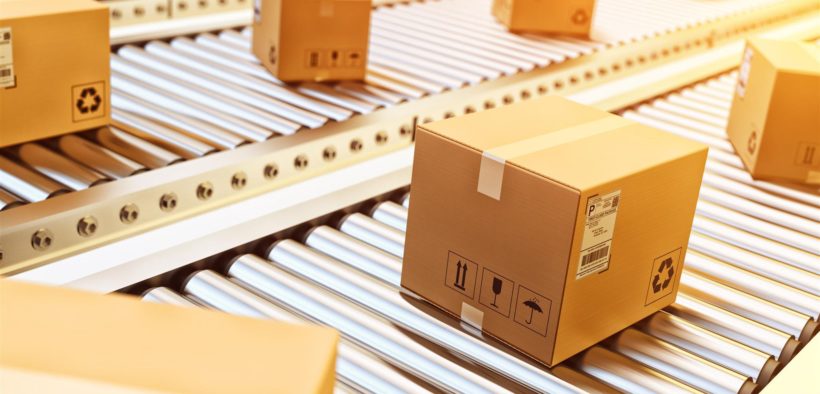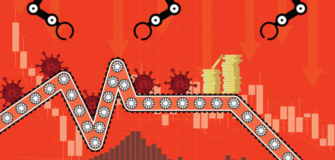Smart Packaging: What are the Benefits?
Share

Passive packaging is a term to describe the traditional way of packaging, such as generic bottles, cans or boxes. While passive packaging can have different colours, shapes, barcodes and graphics, there is no additional functionality. Smart packaging, on the other hand, is an umbrella term that refers to packaging that uses clever methods to package a product. Smart packaging can be broken down in two distinct categories:
1. Active packaging: packaging that provides functionality such as bacteria or moisture control; and
2. Intelligent packaging: packaging that communicates or indicates product status.
Why do brands want to use smart packaging
There are various reasons why brands want to use smart packaging. Let’s explore some of them here:
Enabling traceability in real time
Most manufacturers currently rely on third party logistics providers to distribute their goods from the factory floor to the end customer. Existing disparate systems from the different providers don’t provide a real-time overview of where the goods are at in real time and manufacturers can often only consolidate this information weeks after their products were delivered.
Reducing theft, substitution and counterfeit
Especially in cross-border trade many manufacturers are the victim of theft, product substitution and counterfeit. Given the delay in information and reliance on human beings to report back on the status of products it is very hard for manufacturers to ascertain where the wrongdoing occurs, let alone fix the issues moving forward.
Quality control
Many products need to be transported under strict environmental conditions, such as temperature, humidity, pressure etc. Some logistics providers use dataloggers but this information is not available in real time and is often not handed over to the manufacturers until after the goods have been sold to the end consumer already, at which point any recalls will cause a logistical nightmare and damage brand reputation.
Improving customer experience
Manufacturers rely on retailers to present their goods to the end consumer and often don’t have any meaningful way to communicate to the consumer while they’re purchasing in-store. They also have no way of assuring the end consumer that the goods they are about to buy are in their optimal condition. In China, food and supplement scandals have put a dent in overall consumer confidence. Being able to assure the end customer about the status of a product could well be a deciding factor for people to buy a product over an otherwise similar product.
Product usage and predictive planning
Manufacturers like to be able to predict when their customers are running low on their products so that they can proactively get in touch with the customer or even automate another shipment of products. At the moment most companies rely on their customers to provide this input and this can lead to inefficiencies in the supply chain and far from optimised sales cycles.
Minimising food waste
There is plenty of pressure from governments worldwide to reduce food wastage. It is estimated that around 1/3 of all food produced for human consumption is wasted globally, which equated to over 1.3 billion tonnes in 2017. As an example of this new focus on sustainability, the EU signed a commitment to reduce the volume of food wastage within its own borders with 50% by 2030.
What smart packaging technologies are currently out there?
2018 saw a big advance in smart packaging technology and headway was made in all of the above scenarios. Some of the recent smart packaging solutions are:
- Blockchain technology in combination with QR codes on the packaging provides real time traceability of the supply chain and makes theft, counterfeit and substitution a lot harder.
- Some logistics companies have rolled out software that can monitor the temperature or other environmental conditions and report that on a central dashboard in real time or after completion of their part in the supply chain.
- Brands have rolled out augmented reality (AR) apps that can bring to life the labels of a product, with the aim of creating a closer relationship with the end customer. A good example of this technology is the label of the wine 19 Crimes, which starts to play a video once a special app on the phone is pointed at the wine label (see photo below).
- Modified atmosphere packaging (MAP) is an example of active packaging and has been employed to double the effective shelf life of products to counteract food wastage.
What are the future trends for smart packaging?
According to research done by Smithers PIRA, spending on smart packaging will increase from US $5.68 billion to US $7.60 billion at an average compound annual growth rate of 5.9% across 2018–2023.
In our opinion, this is a somewhat cautious prediction as many brands are still to start their smart packaging journey. Pharmaceutical companies and luxury alcoholic brands have already started experimenting with smart packaging, but most manufacturers of everyday products are still to embark on this route.
Below are some of the trends we foresee for smart packaging in the coming years:
Increased focus on technology standardisation
As smart packaging is relatively new technology there is a lack of a single standard around which the solutions are built. The most forward looking manufacturers and technology companies will work with standards agencies to ensure they work towards any standards that are being developed. This ensures that the information that is reported back to manufacturers from different sources can be reconciled and consolidated in the same manner.
Costs of smart packaging will go down
As with any new technology that is yet to mature, the prices of the technology will drop significantly over the next few years. While the price of smart packaging has already gone down over the past years, a further price reduction will make smart packaging accessible for most manufacturers.
Adaptable packaging technologies
Each manufacturer and their products are different and manufacturers will put a lot of emphasis on working with solutions providers that are willing to work with them to provide a solution that solves their specific issues. An off the shelf solution will not cut it anymore in the future.
Big data and data visualisation
The rise of the amount of data coming from smart packaging will see a need for solution providers to visualise this big data so that manufacturers can easily interpret the data. We will also see a rise in the hiring of data scientists by manufacturers to utilise the big data coming from smart packaging so that supply chain processes can be optimised, such as through predictive planning and better inventory management.
Focus on one complete solution
The current smart packaging solutions are provided by separate solutions providers and can generally be divided in three areas: Anti-counterfeit/theft solutions, traceability solutions, and solutions focusing on end customer engagement. Brands will increasingly want to work with providers that can deliver a total smart packaging solution rather than a solution that focuses on one of the three areas.
How Smart Contracts can bring Trust and Provenance to the Supply Chain















